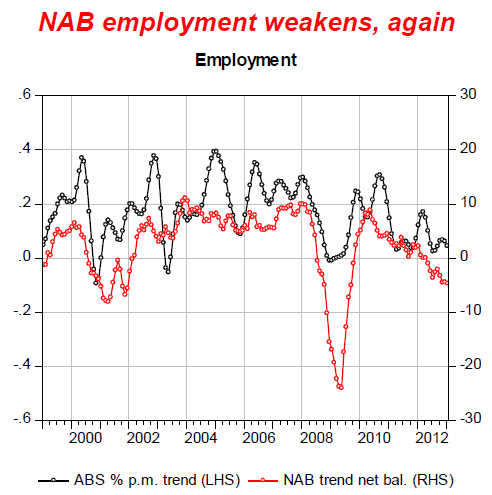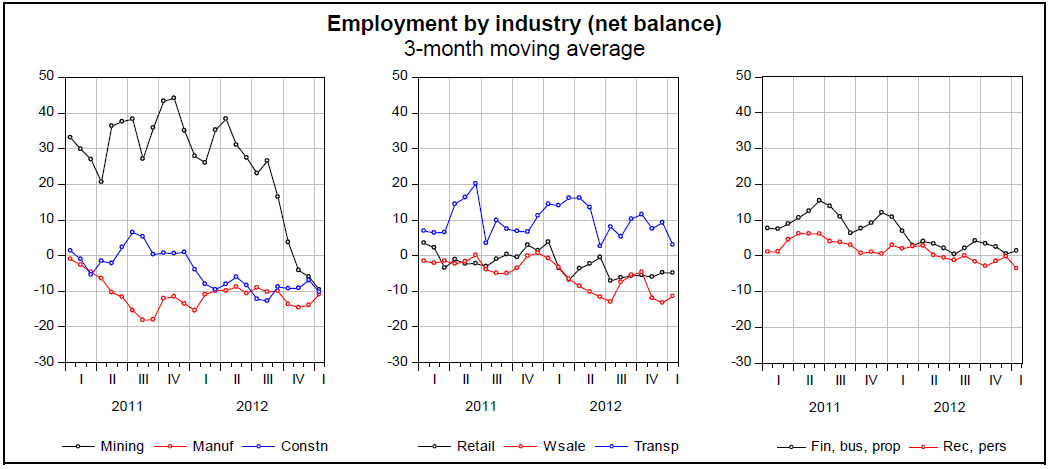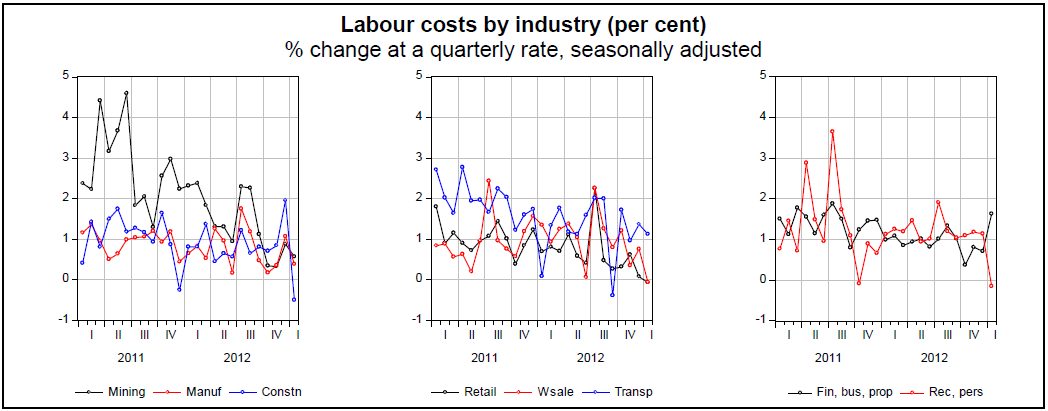The January NAB Survey is out and is a mixed bag with improvements in temporal indicators but not so for leading:

NAB’s assessment this month is spot on:
- Business confidence was broadly steady in January, after recovering strongly in December from very poor levels. That recovery mainly reflects external factors, including the rally in global equity markets and generally better activity in China, as well as recent RBA cuts. However confidence remains below long-run average levels.
- In January, business conditions improved somewhat but the net balance statistic remained negative – implying continuing below-trend growth. While profitability and trading conditions posted solid gains in the month, employment conditions weakened considerably. Forward orders were little changed at poor levels suggesting little upward momentum. A similar story is told by our wholesale based leading indicator (see page 3). Capacity utilisation fell further and is now at its lowest level since 2001. Also credit demand remains near record lows.
- Business conditions were generally better across interest sensitive industries in January, but fell heavily in mining. That, however, returns mining to levels reported in the Quarterly Business Survey for December (and hence it is hard to separate out any impact of the Queensland floods). Recent surveys have highlighted the gradual deterioration in conditions in recreation & personal services and transport & utilities (previous non-mining strong performers). This trend continued in January. It may well be that continuing weakness elsewhere is now spreading.
- Overall, the survey implies underlying demand growth in the March quarter of around 2¾% – a slight improvement on expectations for the December quarter but still below trend.
- Labour costs growth softened significantly in January – in line with a sharp deterioration in employment conditions – suggesting that wage pressures are unlikely to fuel near-term prices growth. Consistent with this, final product price inflation was flat and purchase costs growth eased to a subdued level. Retail prices declined implying further discounting in response to still very poor conditions in this industry.
The employment index is the big issue in this release, falling to the lowest level since the GFC:

The weakness is now pan-sectoral:

And is reflected in big falls in labour costs:

Note especially construction. Although an improvement , this is still a weak report based on employment alone.
Advertisement

